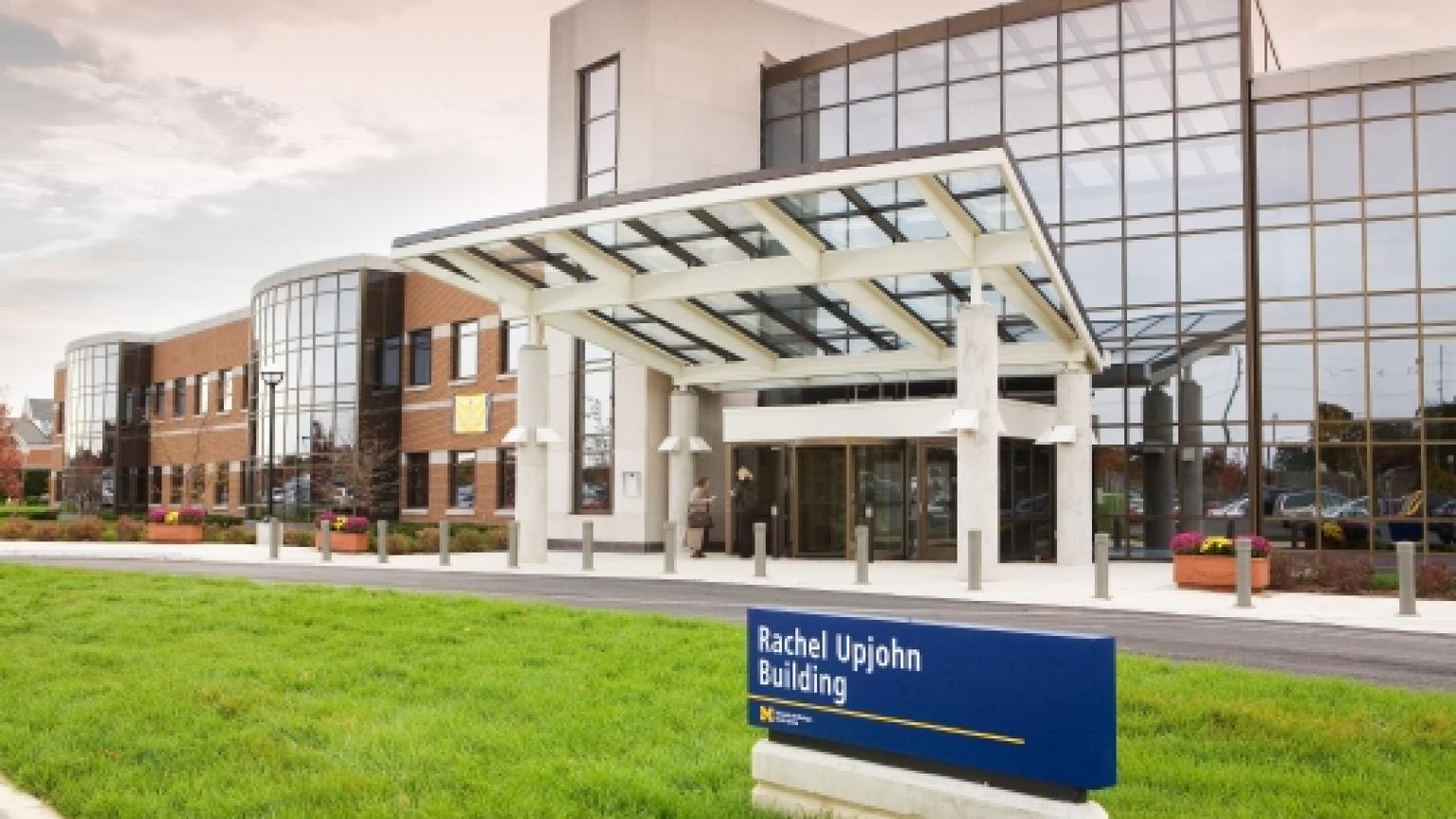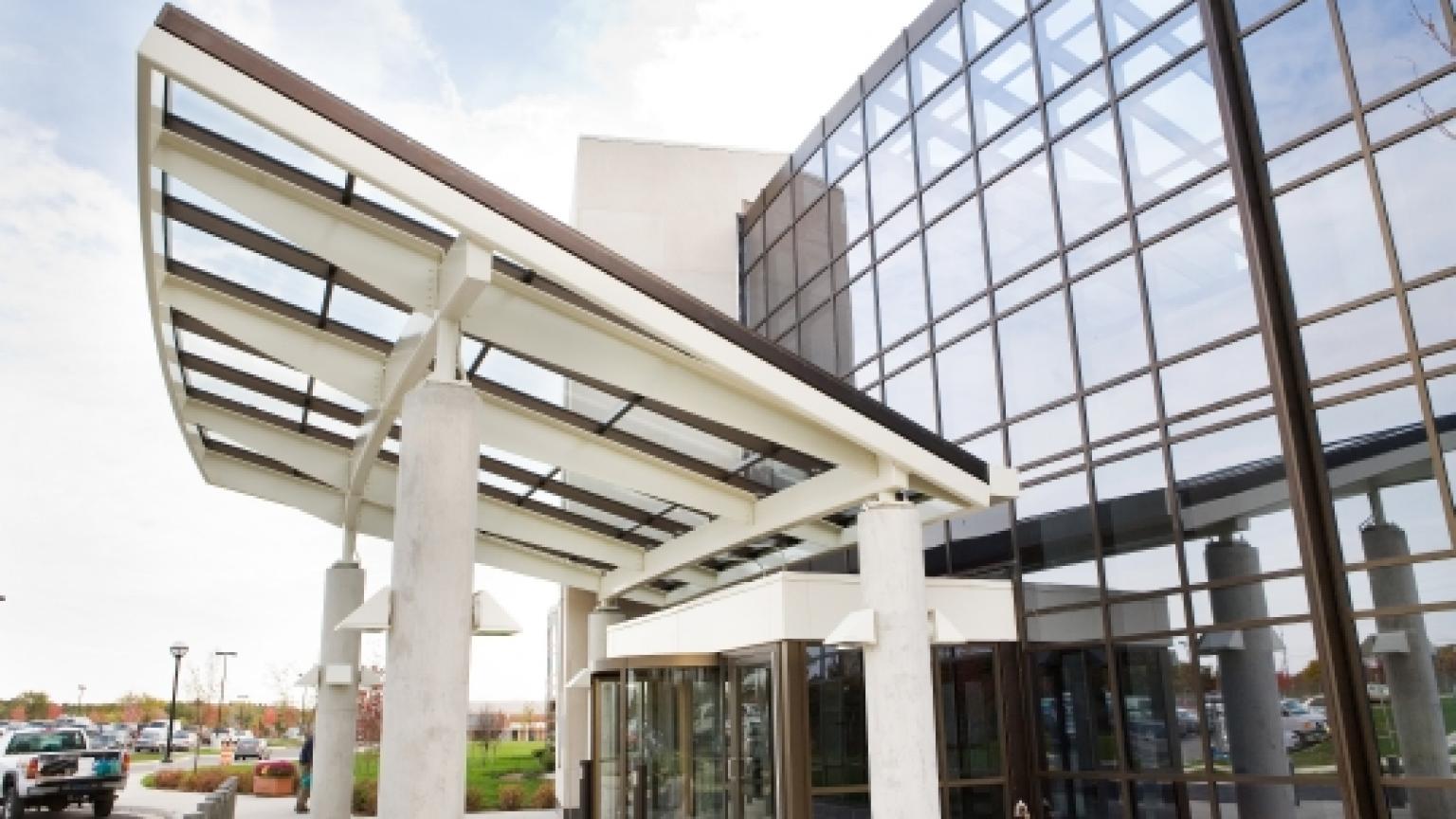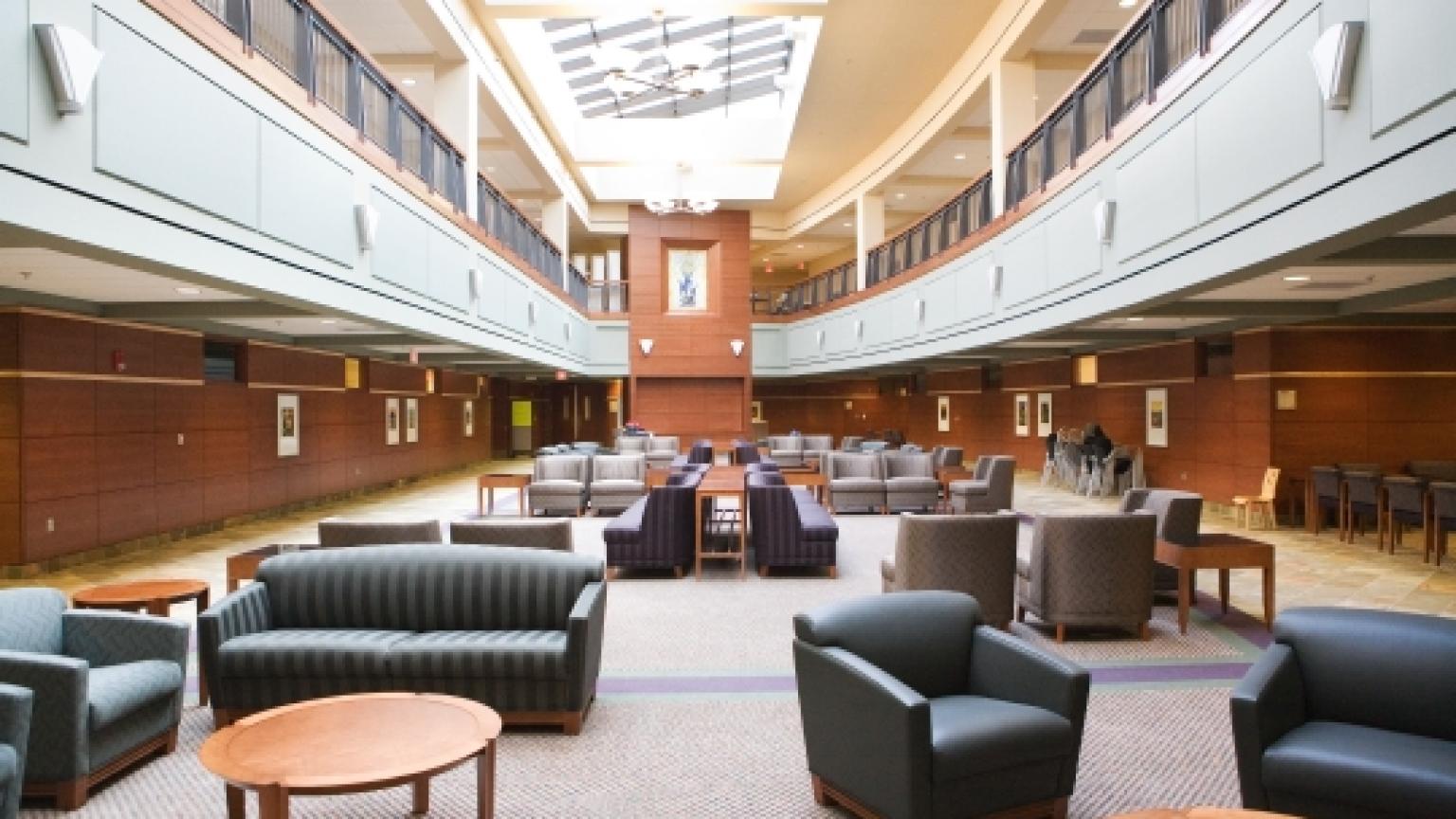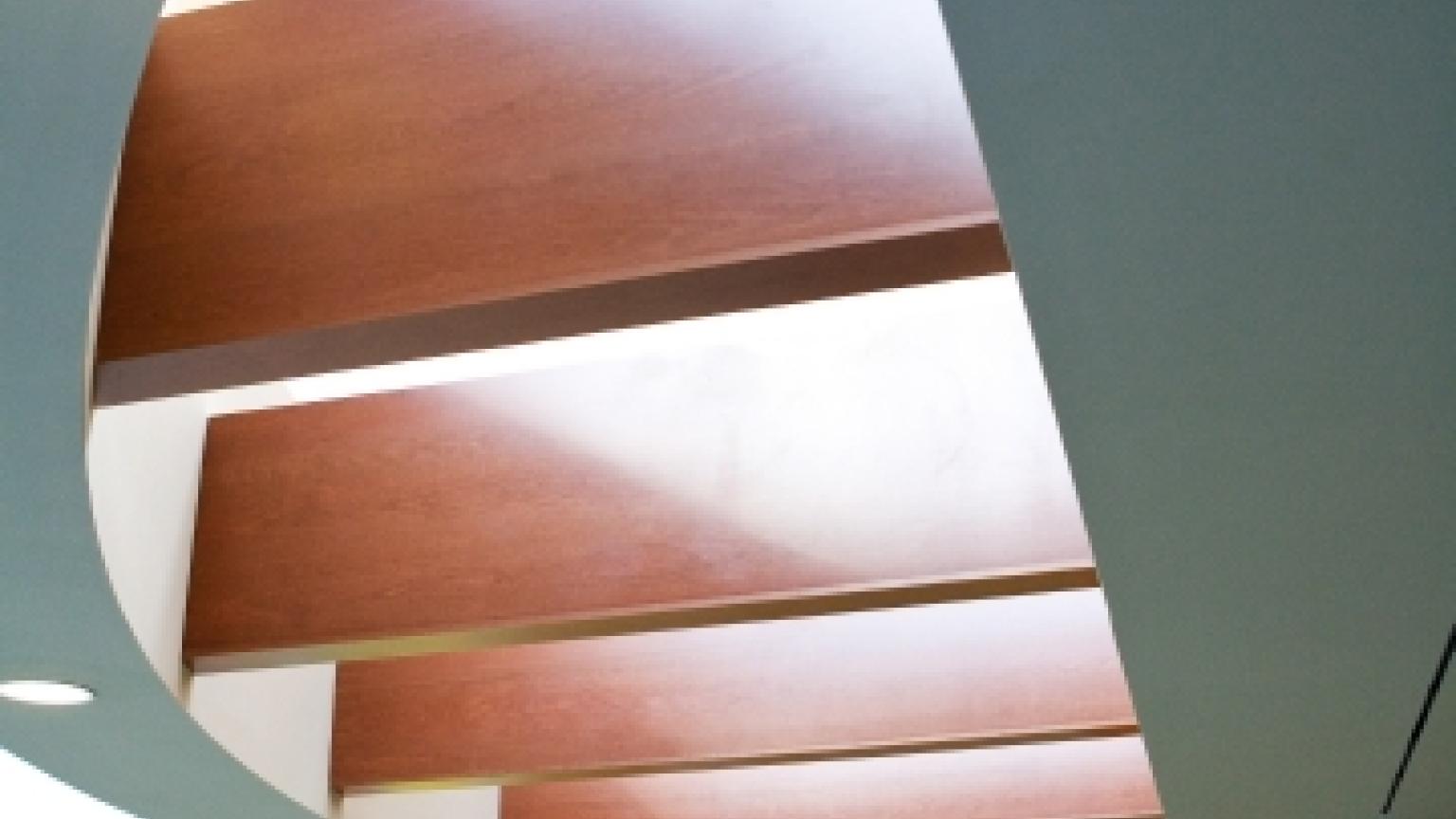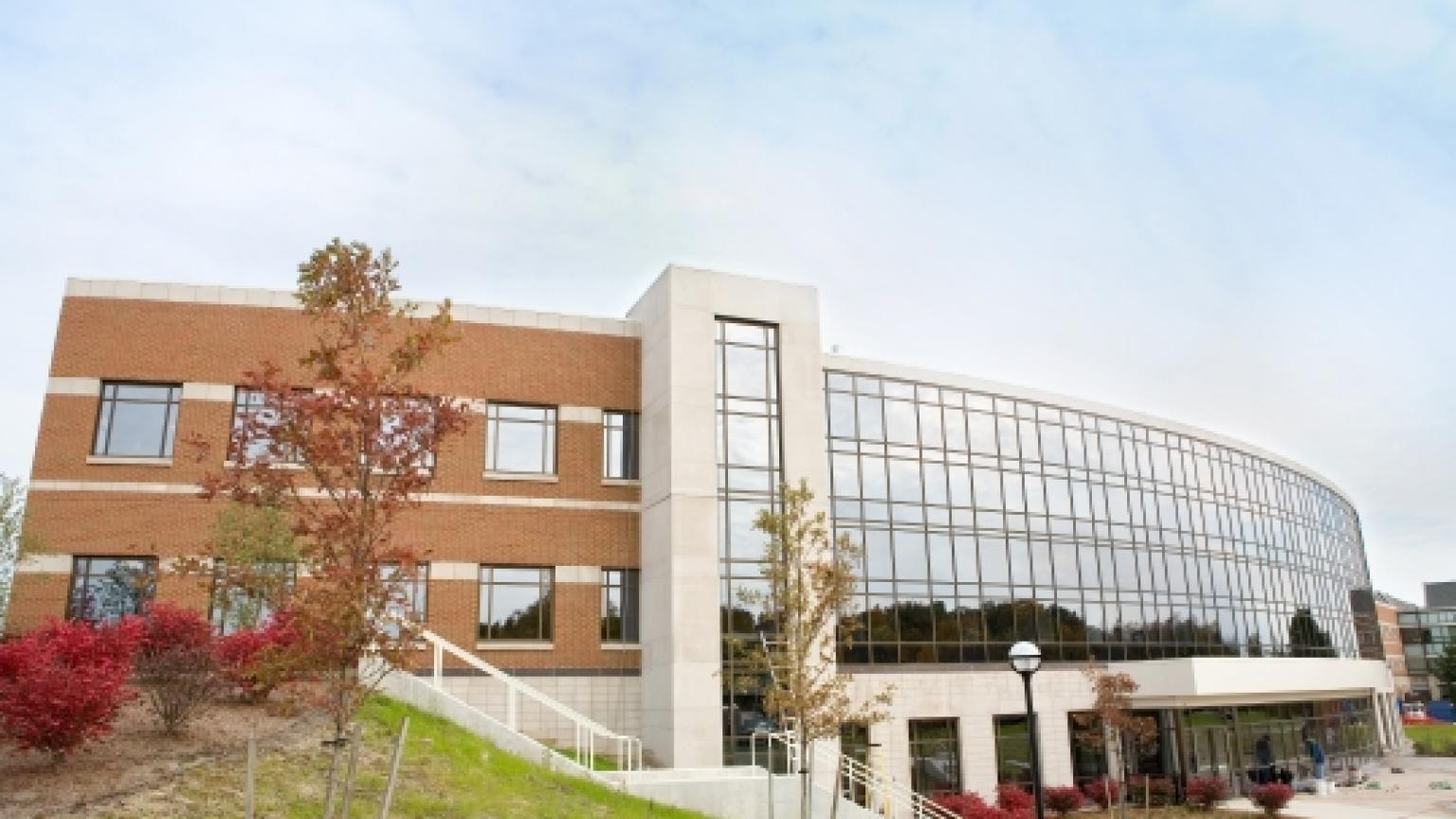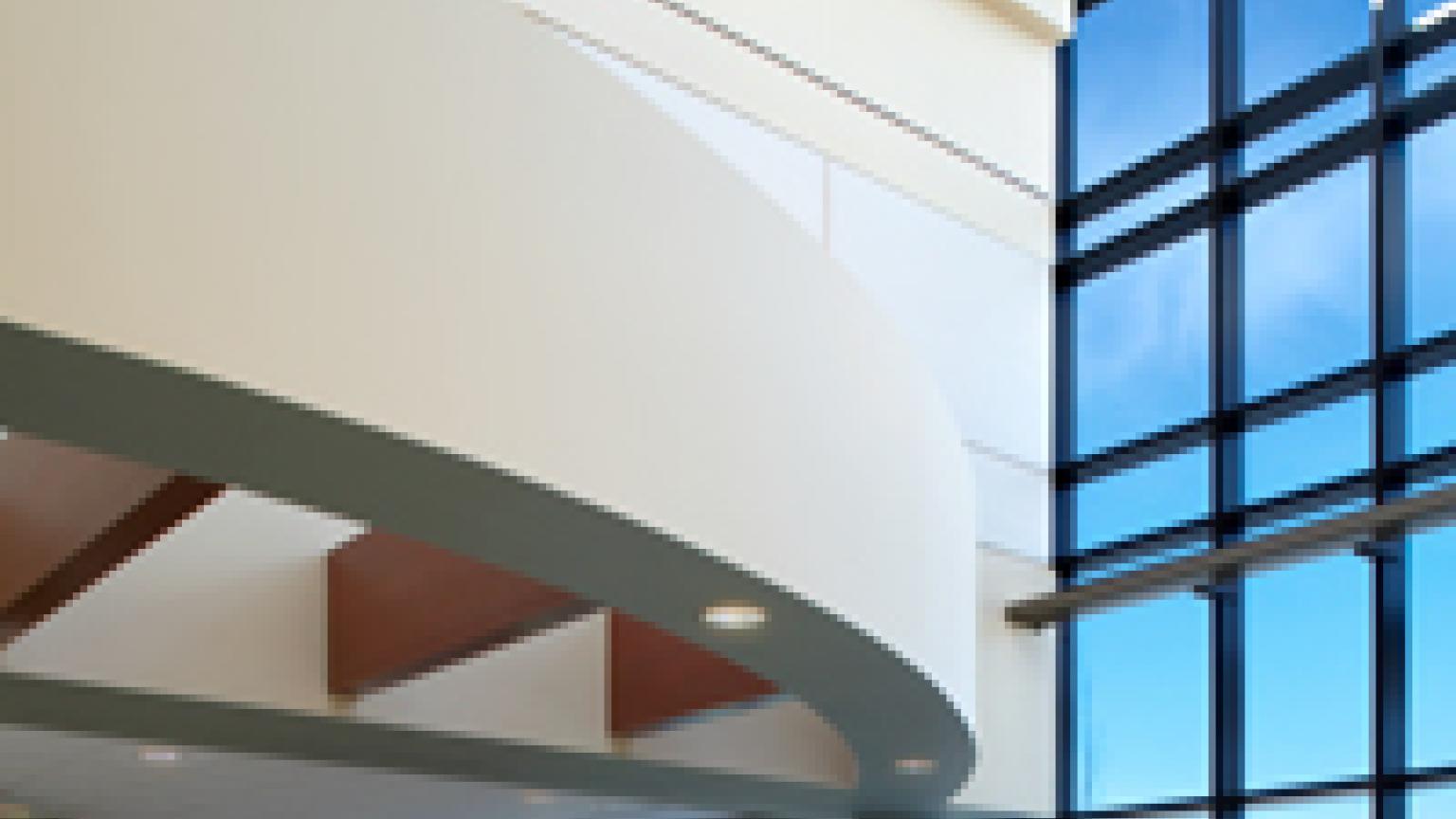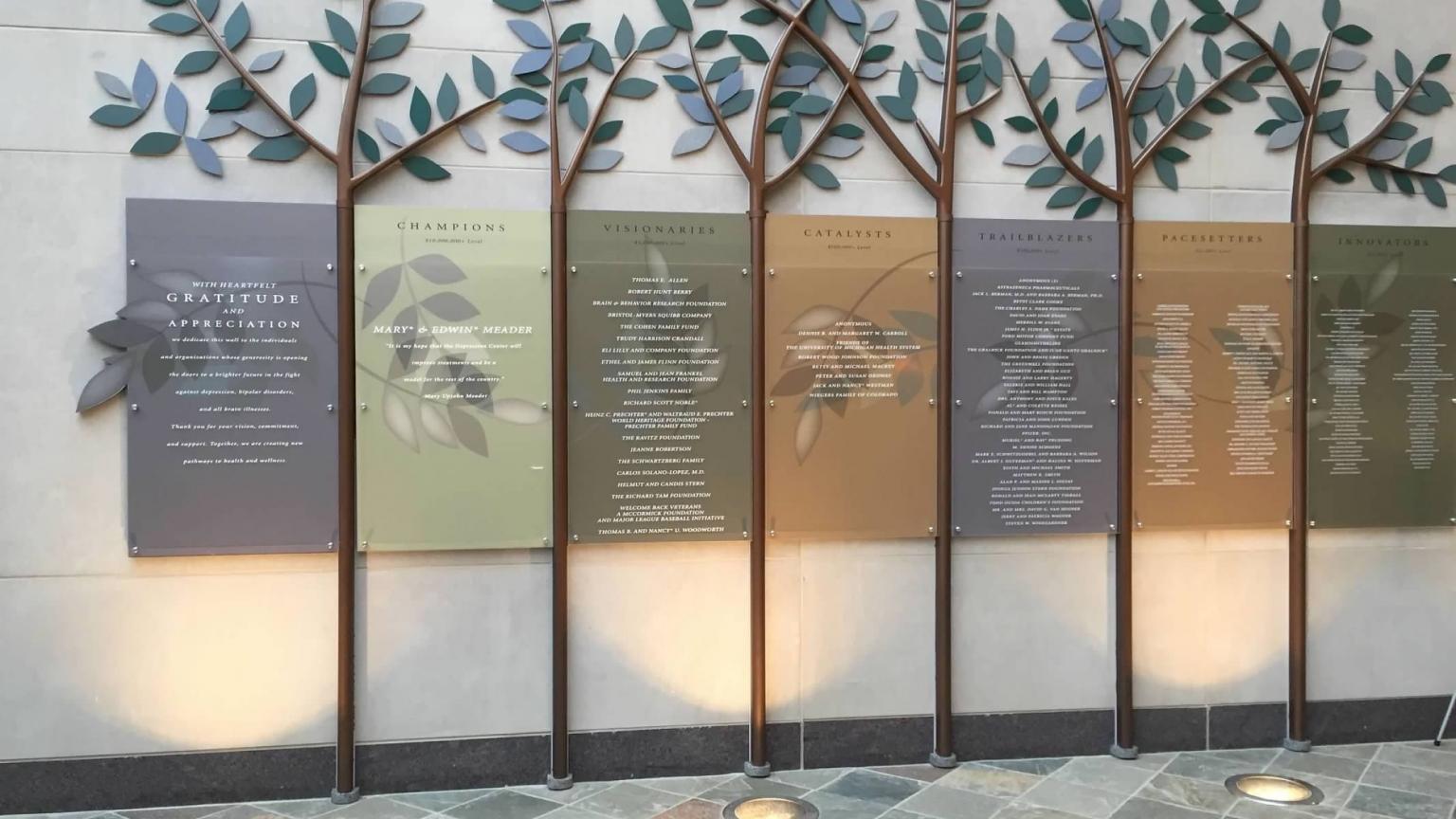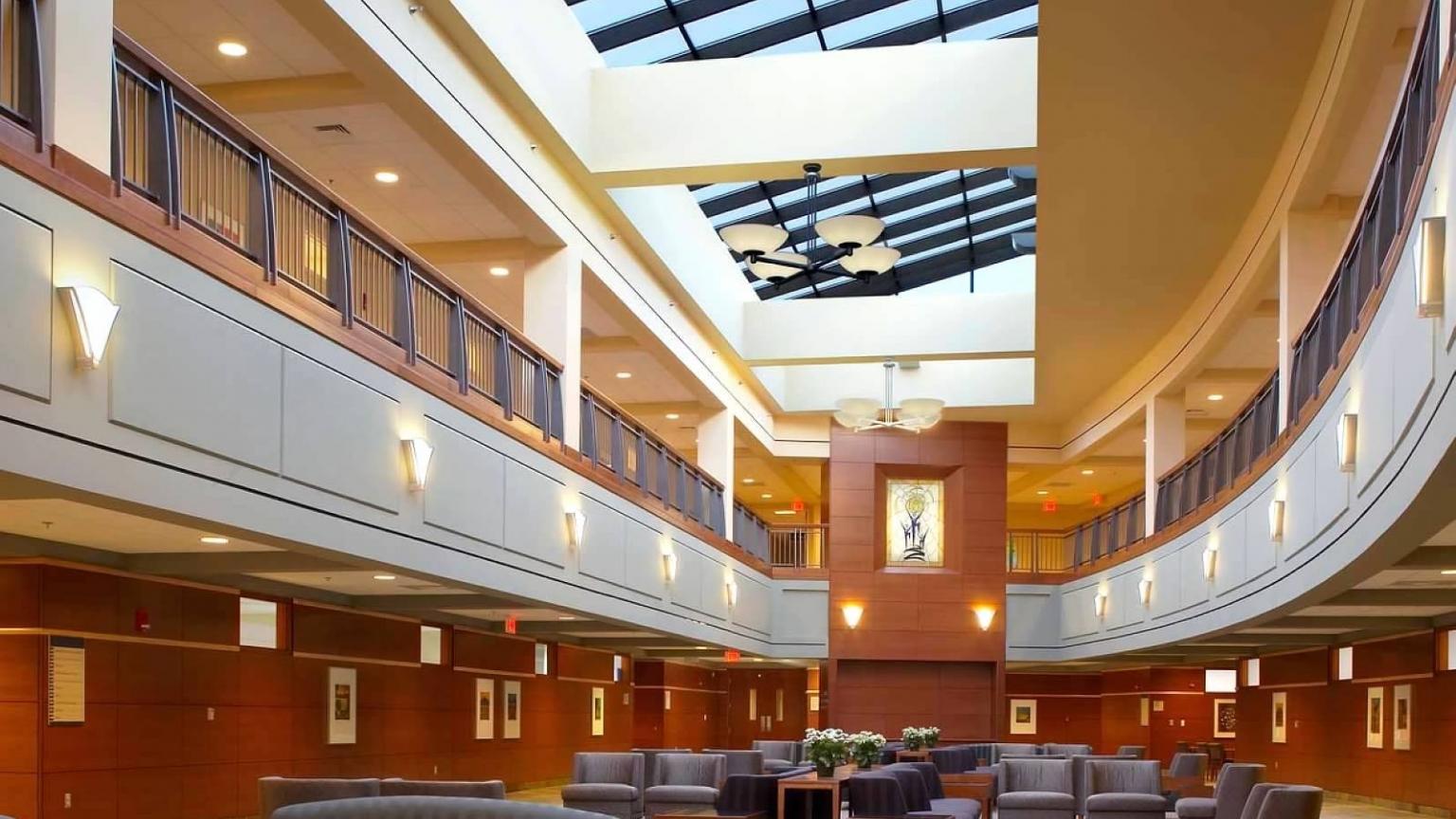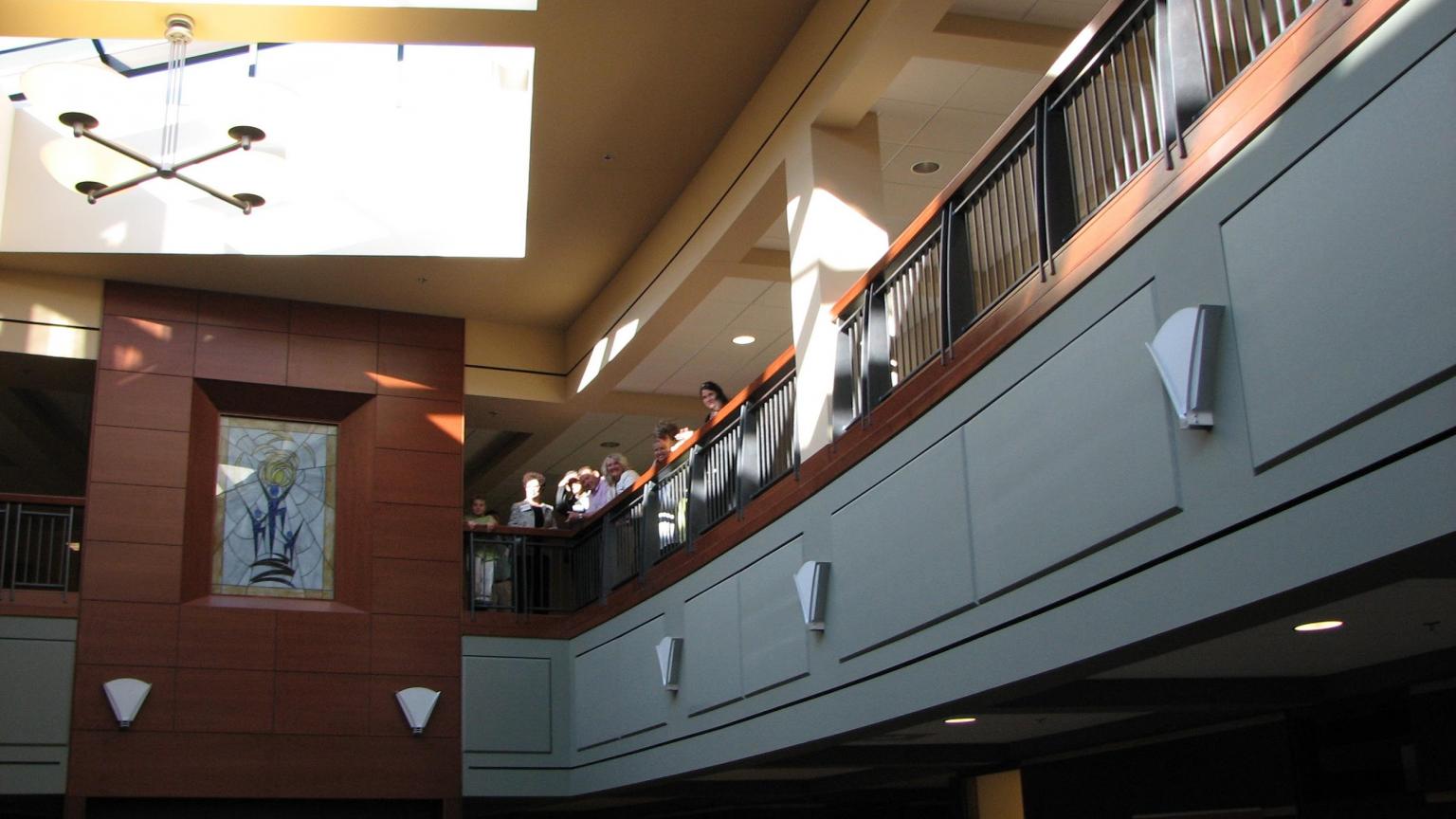The Rachel Upjohn Building is home to the Eisenberg Family Depression Center and Ambulatory Psychiatry Programs. The building opened in November 2006, was designed by architects at Albert Kahn Associates and built in exactly two years by a construction team led by Devon Industrial Group. Private donations, funds from the financial reserves of the U-M Health System, and a $4 million grant from the National Institute of Health’s National Center for Research Resources paid for the building’s construction.
The three-story building has a glass-enclosed entrance lobby, an atrium topped by a massive skylight, and a rear façade made entirely of sheet glass – all designed to bring light into the building throughout the day. The lower level features a 120-seat auditorium and suite of meeting rooms, and opens onto a patio that faces a small forest.
The first floor includes ambulatory psychiatry clinics for children, adolescents and adults, as well as substance abuse clinical areas. The first floor has 335 offices and outpatient treatment rooms where psychiatrists, psychologists, social workers, nurses, and primary care clinicians can meet with patients and families. The first floor atrium also houses the FRIENDS Depression Education and Resource Center (FDERC), funded by the Friends of the University of Michigan Hospitals and Health Centers volunteer group. Using two telemedicine rooms, U-M providers can also offer their expertise to patients around the state of Michigan and beyond.
The second floor is devoted to research in areas such as depression, bipolar disorder, trauma, stress, anxiety, substance abuse, sleep disturbances, and neuroimaging. A Sleep & Chronophysiology Laboratory has eight beds for overnight sleep studies. An MRI simulator helps patients and research volunteers become accustomed to the MRI experience before they undergo their scans at University Hospital. The second floor also houses the U-M Addiction Research Center, dedicated to clinical and basic research examining the biological, social, and contextual factors underlying substance use and addiction, as well as those factors that may contribute to recovery and maintenance. Other research features include observation rooms, freezer storage for genetic samples, and computer rooms for scientific data and brain-imaging analysis. In addition to research facilities, the second floor houses open "Collaboratory" areas, where researchers can gather informally to exchange ideas.
The building is named for Rachel Mary (Upjohn) Meader of Kalamazoo, who with her husband Edwin gave $10 million toward its construction. It’s also named for Mrs. Meader’s grandmother, Rachel Babcock Upjohn, who was the first wife of William E. Upjohn, M.D. Dr. Upjohn was a U-M Medical School alumnus in the late 19th century and the inventor of the first pill that dissolved easily in the human body. He co-founded the Upjohn Pharmaceutical company with his brother.
In addition to the Meaders, notable donors include Phil Jenkins, an Ann Arbor businessman who gave $2 million toward construction and another $2 million toward an Eisenberg Family Depression Center professorship and research; and Waltraud (Wally) Prechter, who gave $3.5 million to fund the new Heinz C. Prechter Bipolar Genetic Repository, a national research effort to determine the genetics of bipolar disorder.
All three major donors to the building’s missions were motivated by their personal experience: Mrs. Meader’s own lifelong struggle with depression and successful treatment; Mr. Jenkins’ late wife Lyn’s battle against the same disease; and Mrs. Prechter’s tragic loss of her husband Heinz to suicide in 2001, driven by his bipolar disorder.

